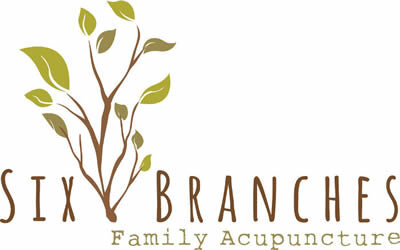Western Medicine has brought us many great things, however, there are a few things that it still doesn't handle very well. One of these things is functional pain, or pain without a clear cause. An article in the New York Times (11/22/10) highlights WM's lack of understanding of functional abdominal/stomach pain. Many people suffer from stomach pain, but diagnostic tests show nothing physically wrong with the patient. Patients often hear that it's "all in their head" and tire of having to go from diagnostic test to diagnostic test with no results. Many MDs recognize that TCM is useful in the arena of functional pain and are referring their patients to acupuncturists for treatment.
Traditional Chinese Medicine (TCM) has a different system of diagnosis from WM, which is one of the reasons that it's so well-known for treating pain. At the heart of TCM's pain-treating philosophy is the Mandarin phrase, Bu Tong Zi Tong. Bu Tong Zi Tong literally means, "No movement [there] is pain", or stagnation of any kind will result in pain.
Stagnation is a common concept in Chinese medicine and is applied to many ailments, but it can arise from many different causes. For instance, too little exercise causes stagnation, resulting in various ailments from back pain to hypertension. On the other hand, too much exercise can exhaust your yin and qi and cause stagnation, even if temporarily, (think lactic acid build-up in the muscles, or sports injuries that take a long time to heal). Emotional stress can also cause stagnation, and is often one underlying cause of those previously mentioned stomach pains.
The key to treatment in TCM is figuring out what cause is underlying the stagnation. Our ability to do that lies in the patient interview, our understanding of the yin-yang relationship, and qi flow in the body. Chinese medicine asks a lot of questions that don't seem at all related to the pain, differentiates based on a range of a person's symptoms, both physical and emotional, and uses the location of the pain as a guide for treatment. Acupuncture is used to open the meridians and get qi flowing on the surface of the body, and herbs may be used to move qi and blood on an internal level. (The exact mechanism of how acupuncture works is still basically unknown in a western medical sense, and will be the topic of future posts!) Dietary recommendations are often given as well.
WM is just getting on board with a more holistic approach. By looking at the whole patient and understanding the patterns of qi flow in the body, Chinese medicine has been treating acute, chronic, and functional pain for thousands of years.
Prevention tip:
Moderate exercise is the best way to avoid stagnation before it starts to cause you pain. Even if you're not ready to go jogging or get on a bike, taking a walk after meals, and exercises like Yoga and Tai Chi are things that most people can do on a regular basis. Also, strong emotions can cause stagnation, so finding appropriate ways to observe your emotions and let them pass by can help avoid stagnation on a deeper level in the body.

